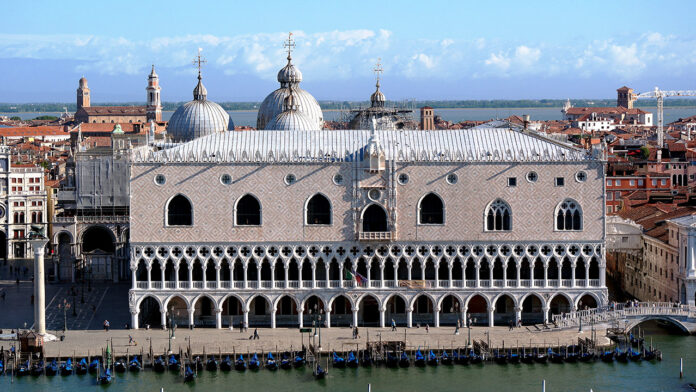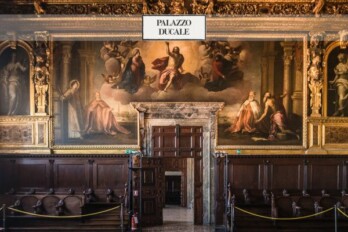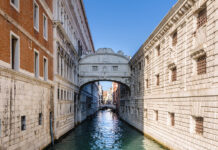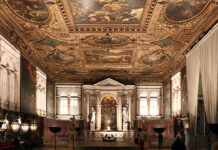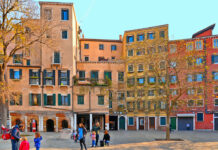Palazzo Ducale, the seat of the government when Venice was one of the most feared maritime powers in the world, is now a museum and a symbolic place, with its admirable façade, a masterpiece in Venetian Gothic style, and the monumental Scala dei Giganti in the inner courtyard.
One of the most famous buildings in the world, Palazzo Ducale is located just a stone’s throw from the equally famous Basilica of San Marco, both enhancing the unforgettable scenic beauty of the square of the same name in which they are housed.
Built as the residence of the Doges, the governors of the Maritime Republic of Venice, Palazzo Ducale is a Gothic masterpiece featuring several highly unusual architectural features. Its appeal derives from the contrast between the majesty of its size and the extraordinary delicacy of its supporting columns. Its pinkish-red marble façade, which either gleams or fades as the light changes, is one of the most widely photographed exteriors in the world. For all these reasons, merely admiring its exterior would suffice, but visiting its interior is an unmissable experience, whether you’re interested in architecture, art or history.
The interior of Palazzo Ducale is now a museum. The recommended tour follows a route that takes visitors upstairs and downstairs, crossing over the palazzo’s floors and offering visitors access to the Museo dell’Opera, the exquisite rooms of the Doge’s Apartments and the Institutional Chambers. The tour ends with a visit to the Armoury and the Prisons.
Visitors can also book a Secret Itinerary tour. Led by an expert tour guide, it takes individuals or small groups on a tour to discover the less well-known parts of the Palazzo.
One of the most famous and recognizable bridges in Venice is located within the complex of Palazzo Ducale. It connects the main body of the palace to the 16th-century prisons and is known as the Bridge of Sighs. According to legend, while crossing it on their way to the prison, condemned prisoners would stop for a moment and ‘sigh’ upon viewing the beauty of Venice one last time before being locked in their fetid cells. Now free from its sad role as a path to darkness, only the heart-rending beauty of the bridge remains.






